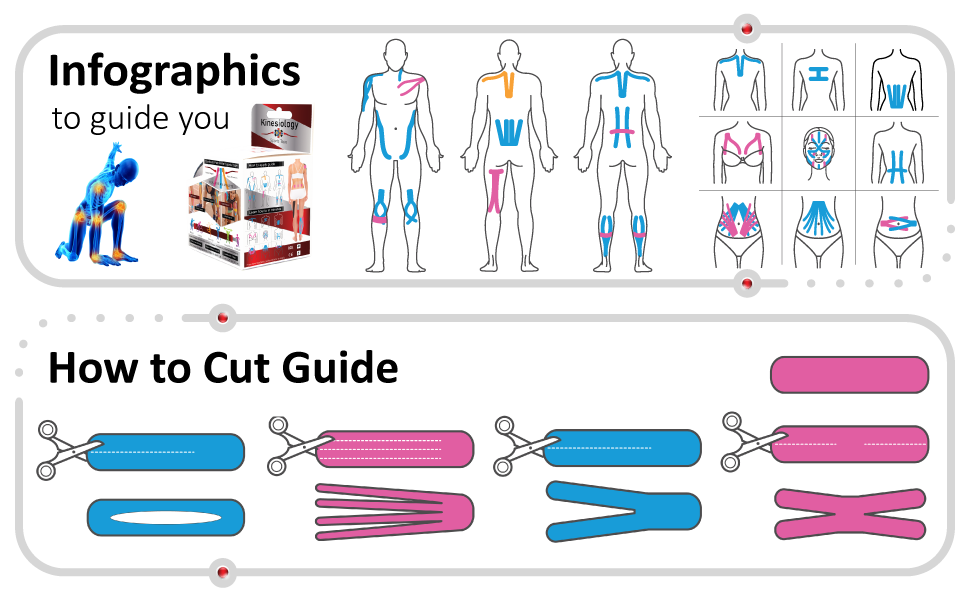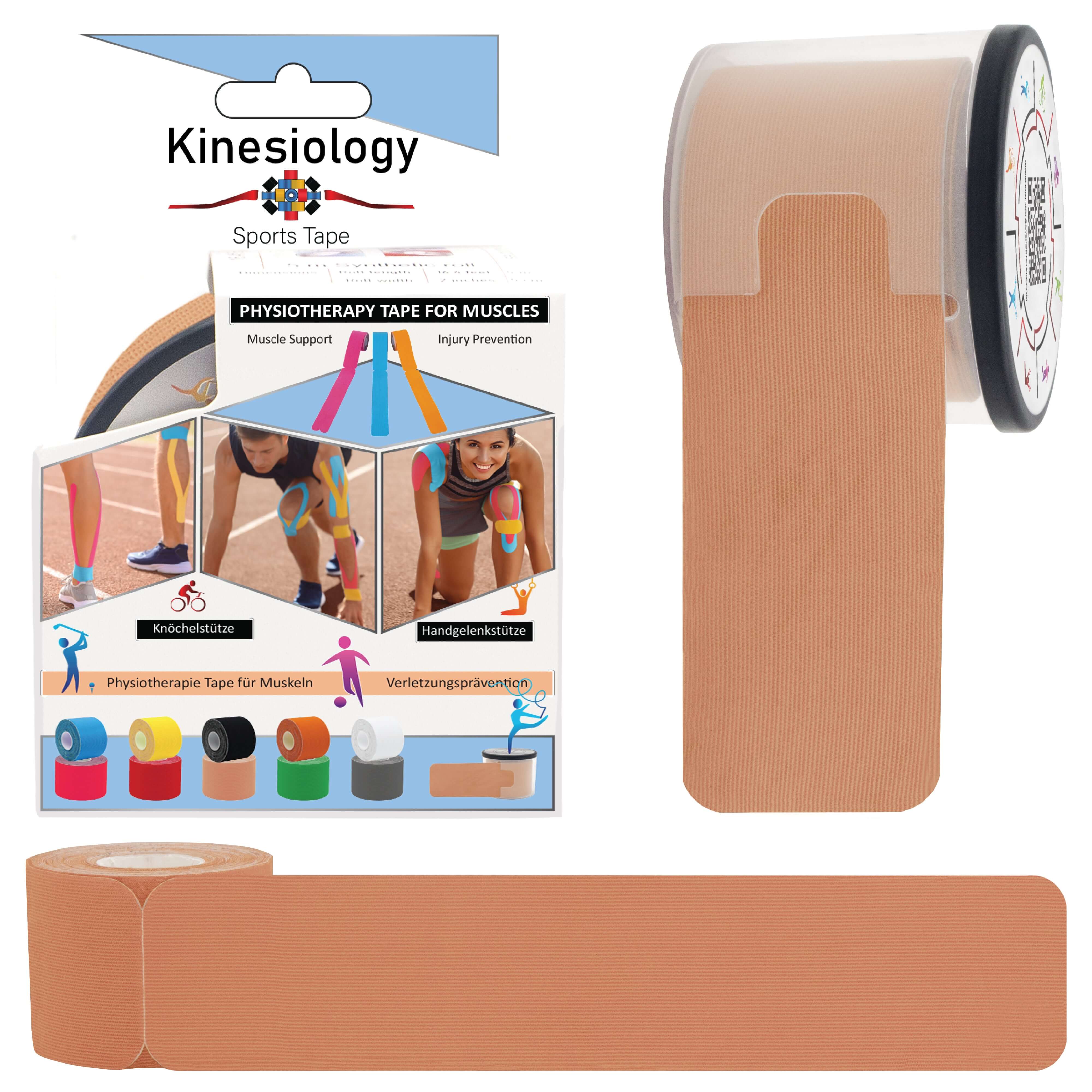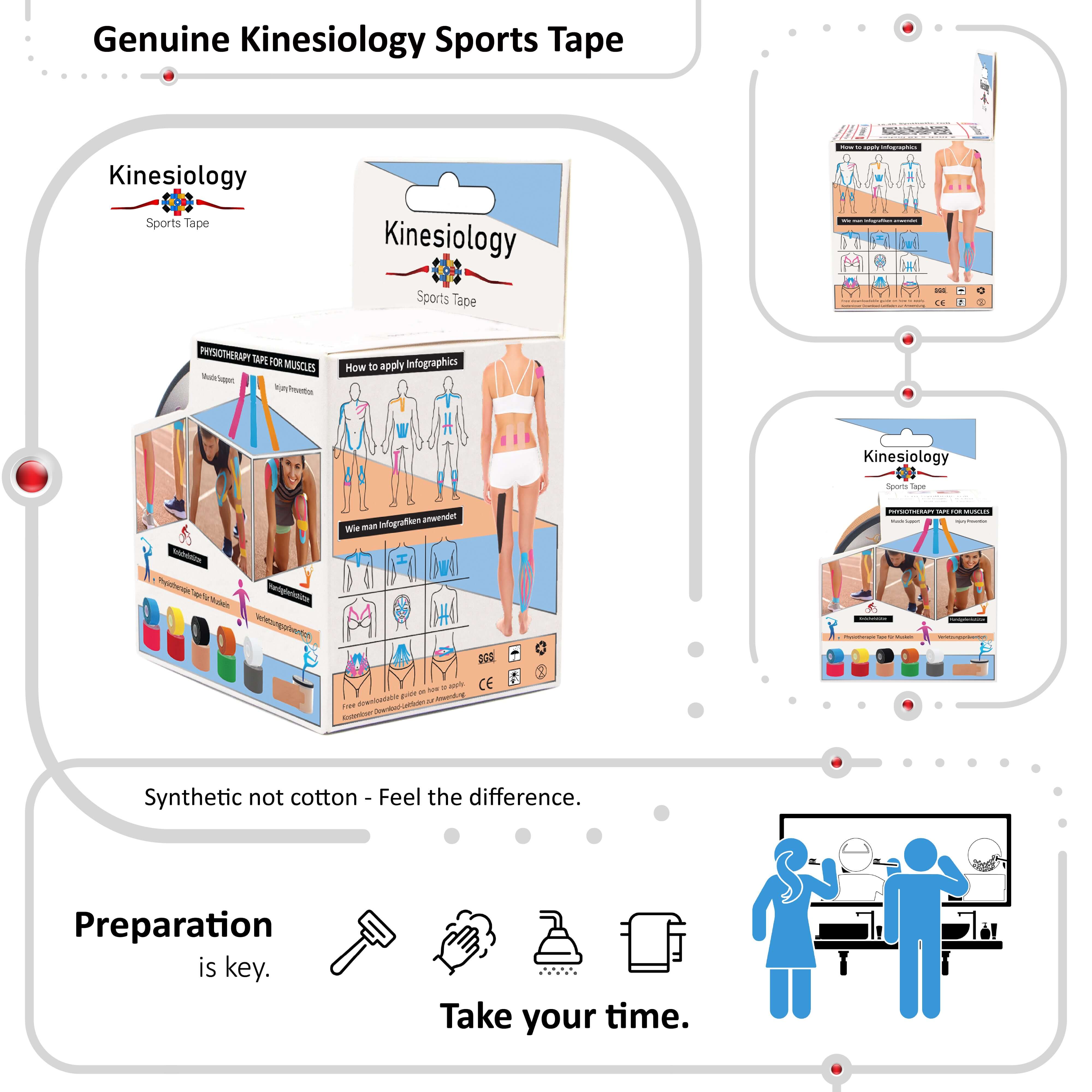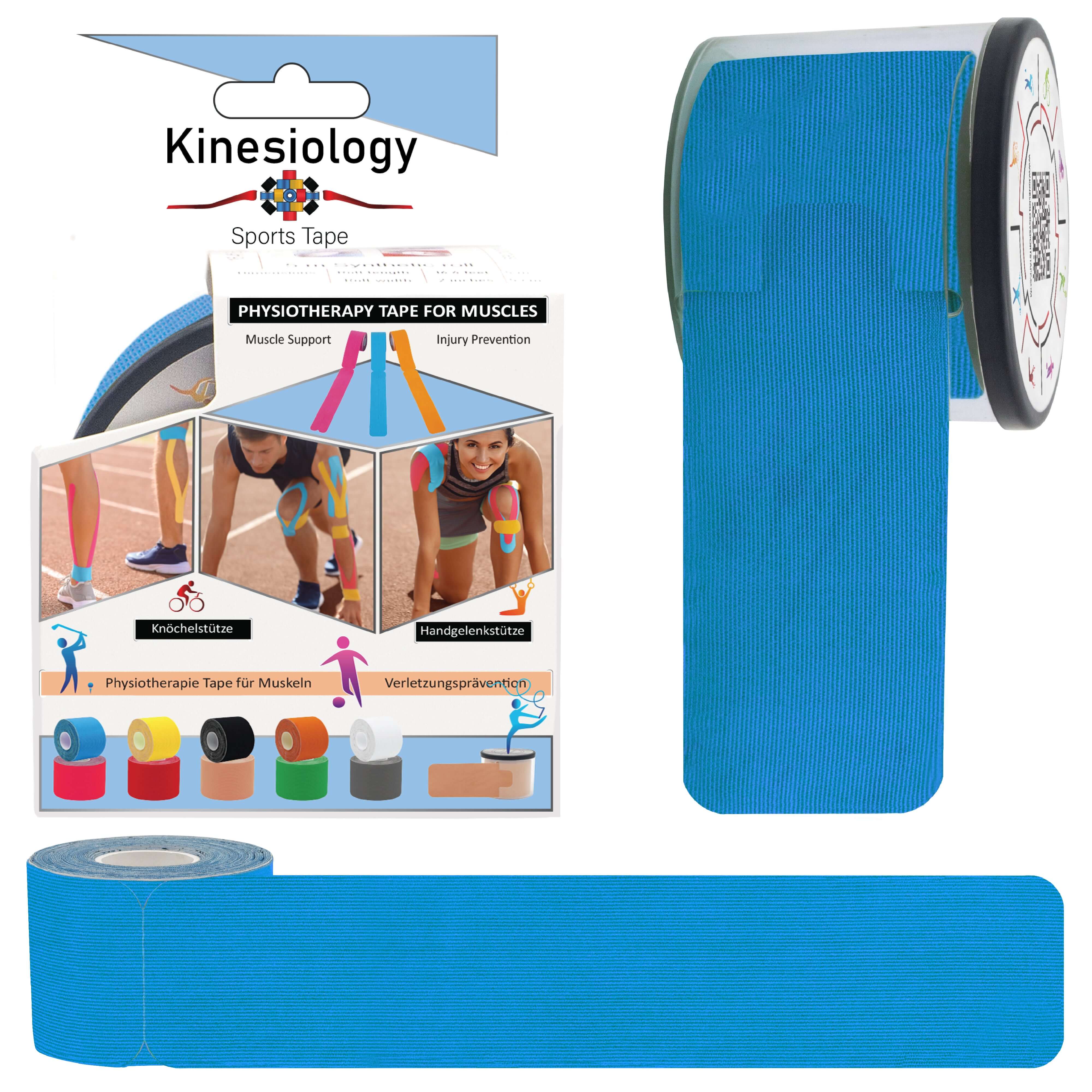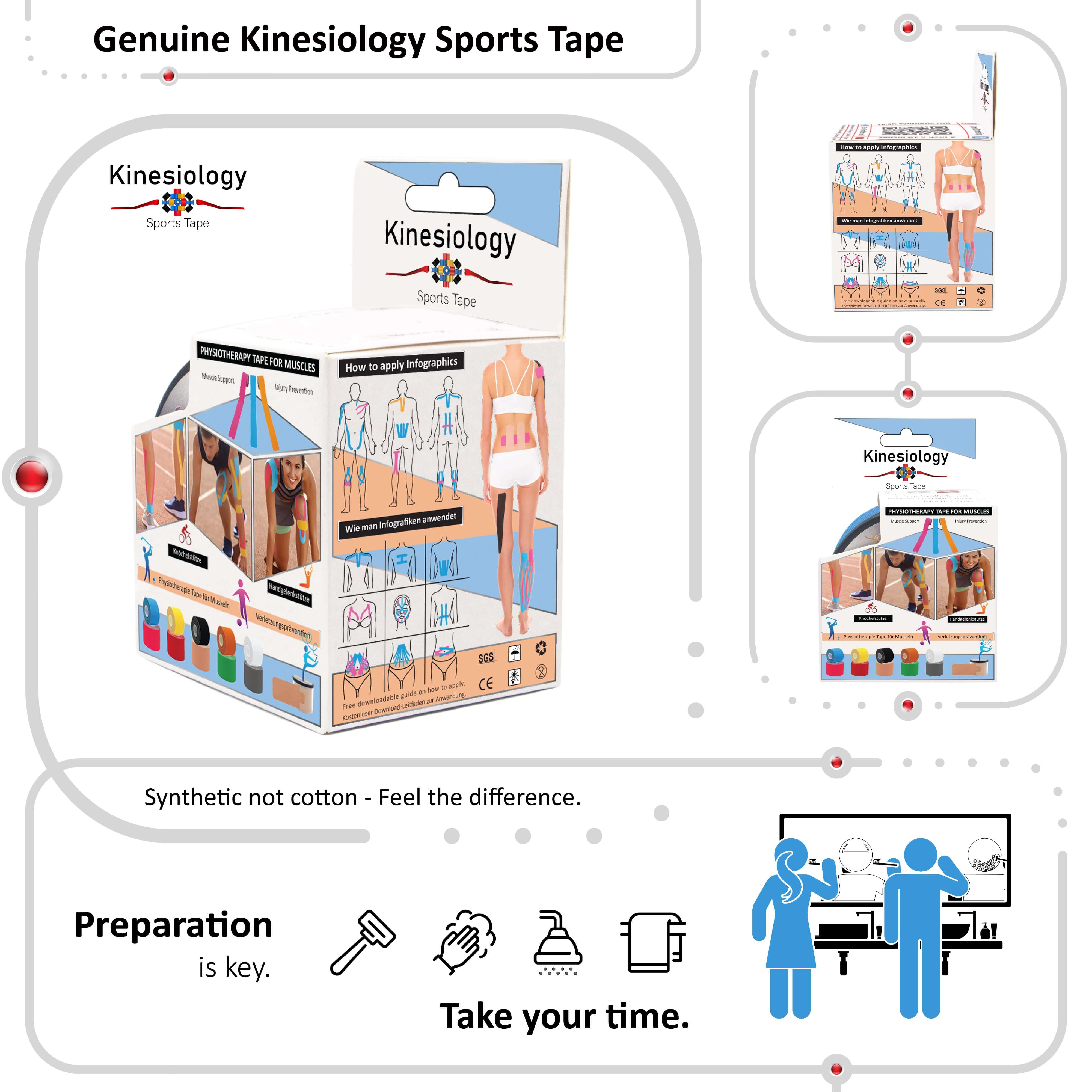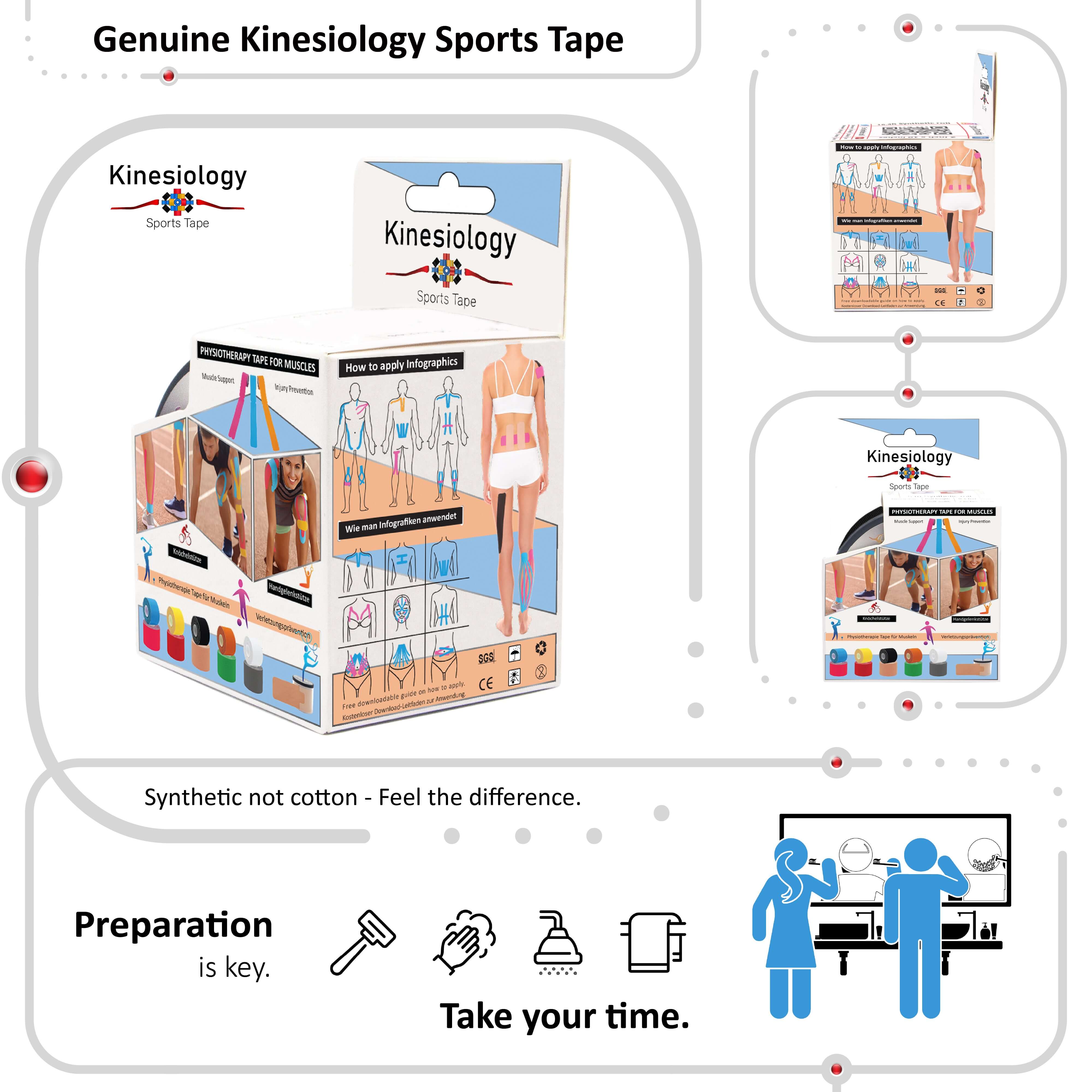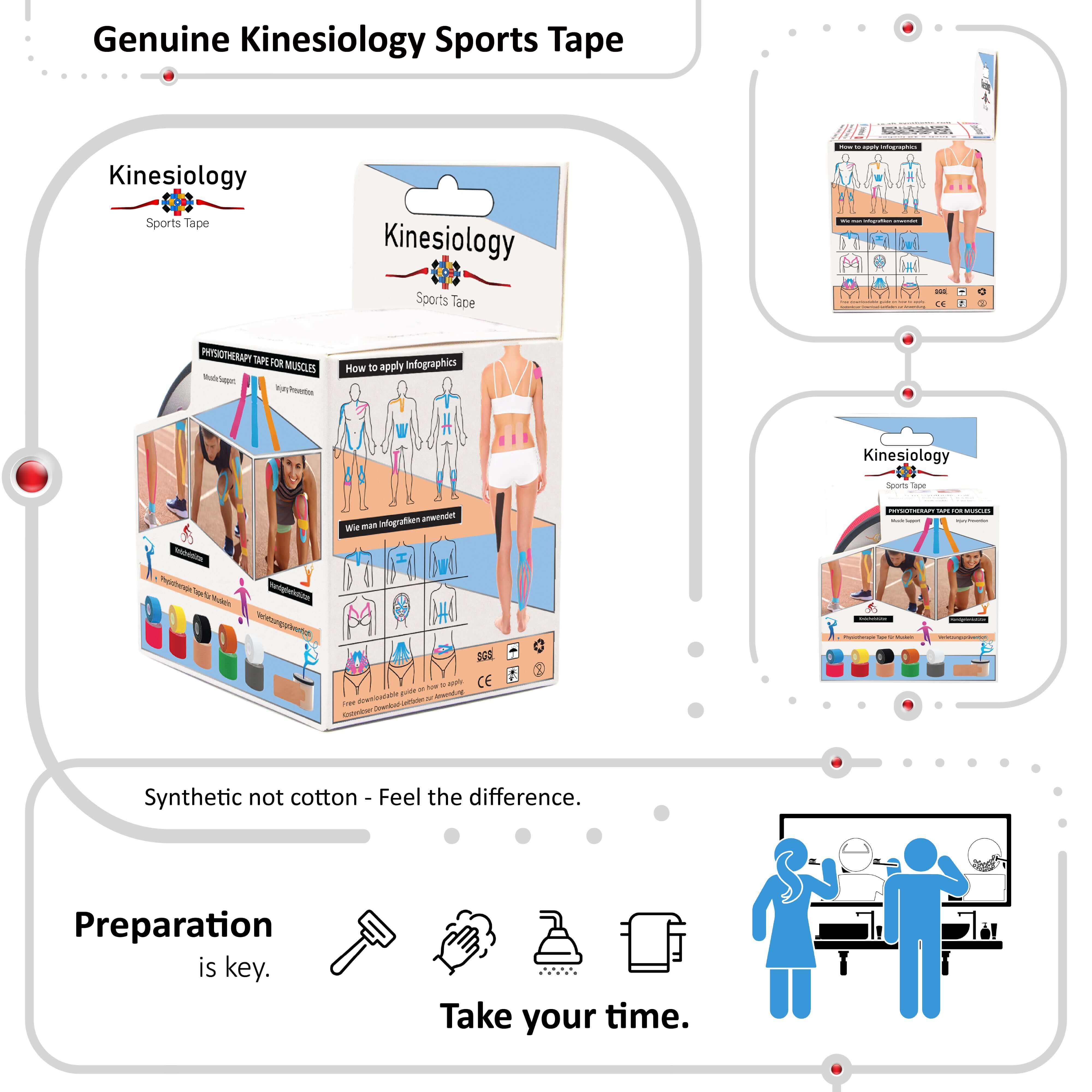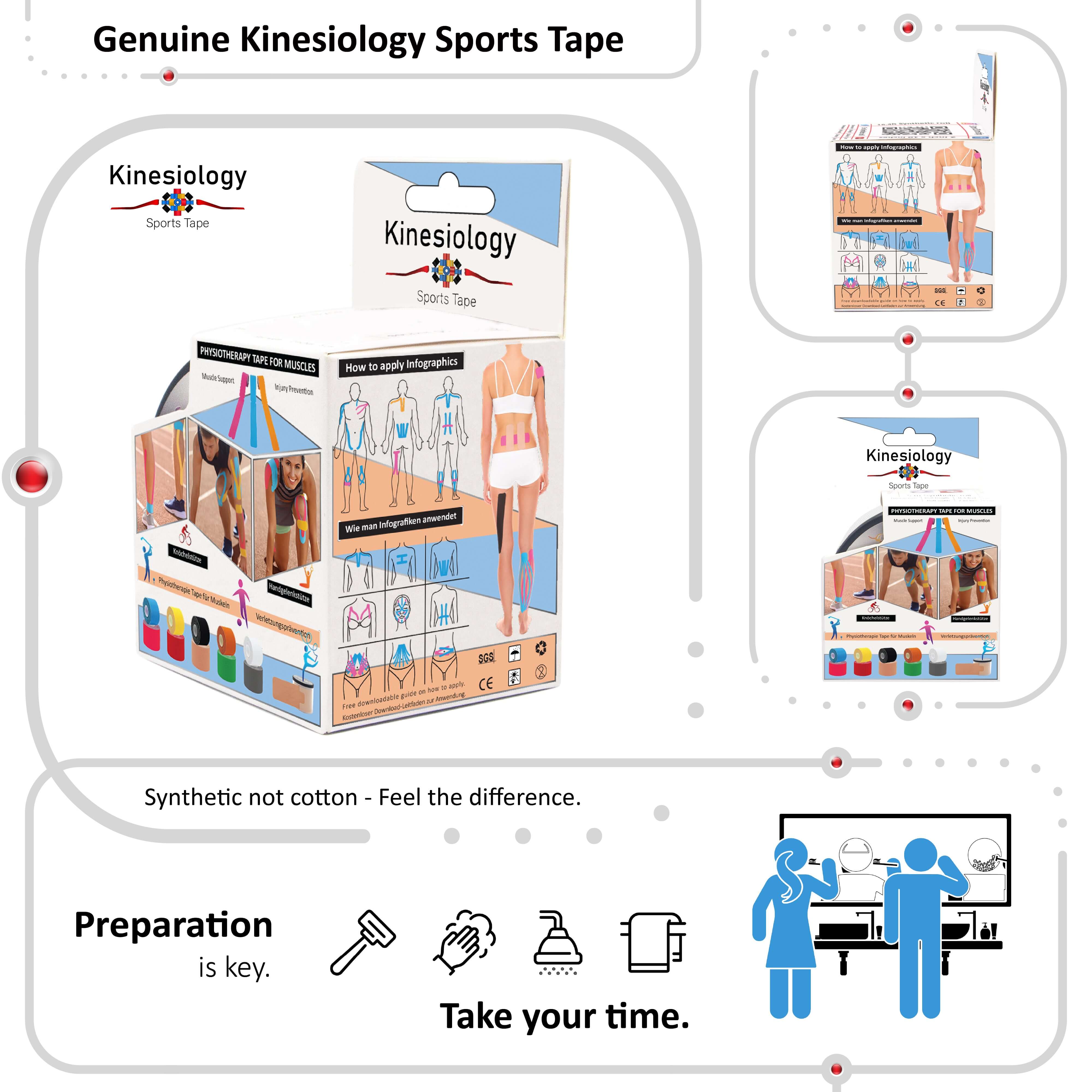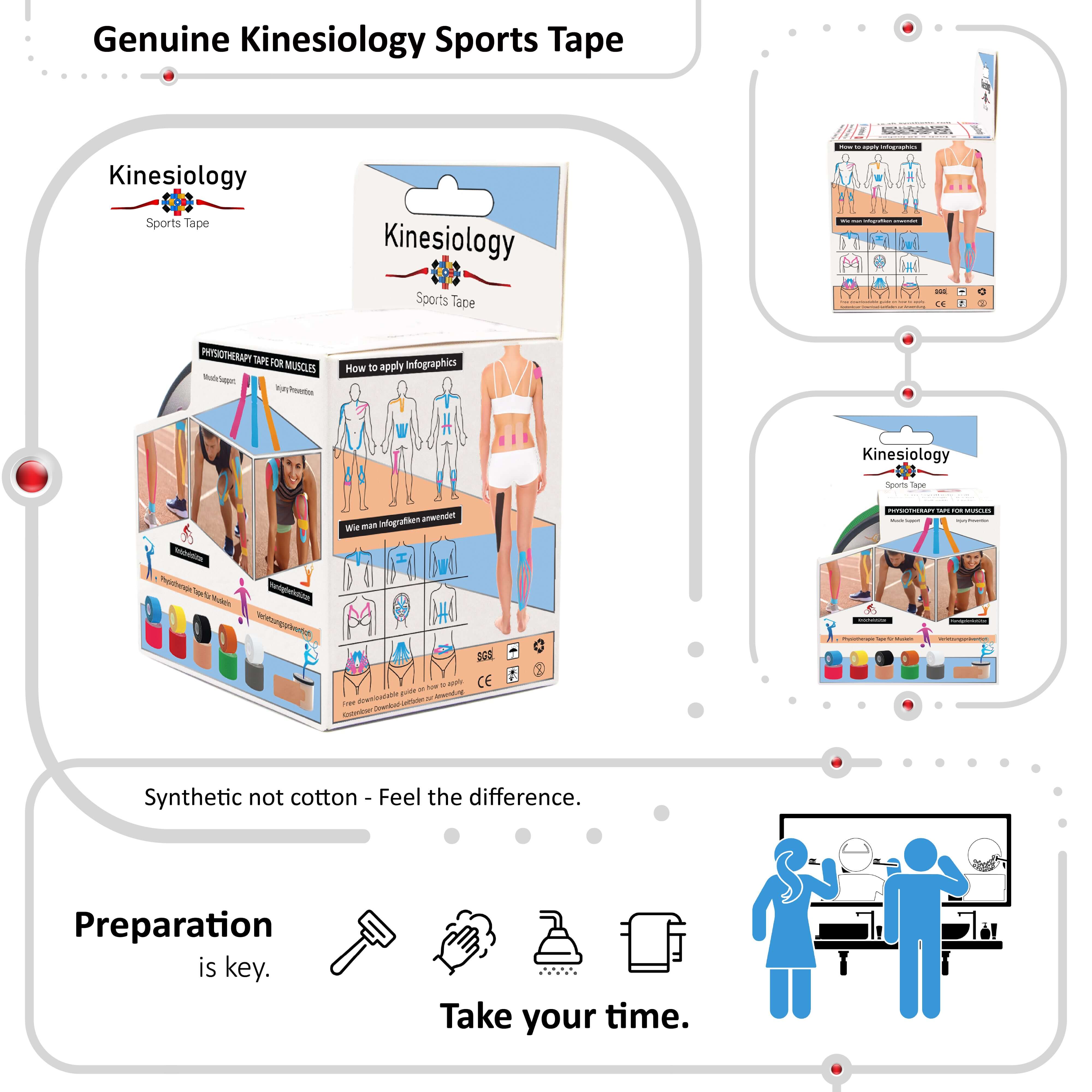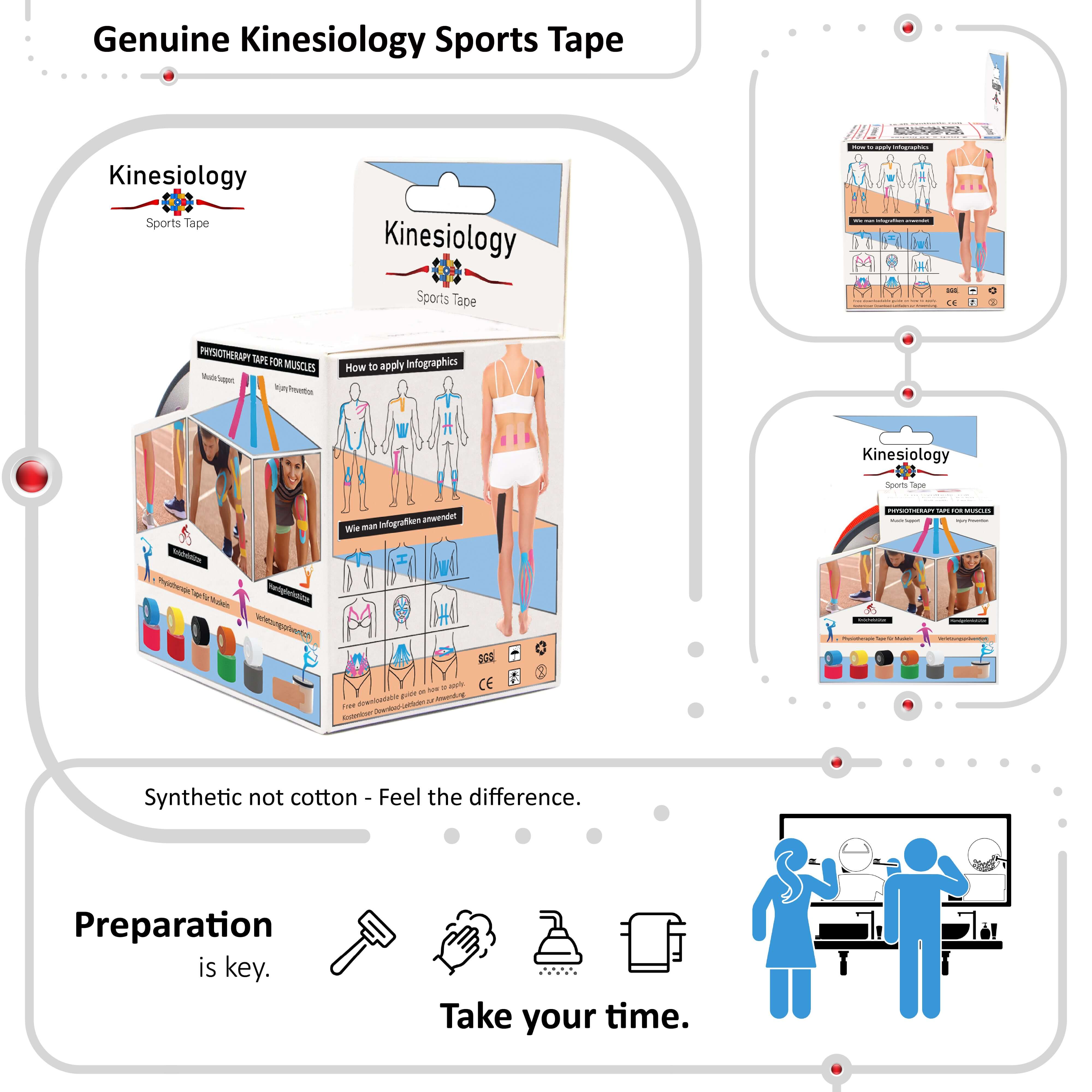
Kinesiology tape for lower back pain

Lower back pain – a constant companion for millions worldwide. It disrupts daily activities, limits mobility, and can leave you feeling frustrated. But what if there was a drug-free option to manage that nagging ache? Kinesiology tape has emerged as a popular tool for lower back pain relief, offering a vibrant and potentially effective approach. This blog dives deep into kinesiology tape for lower back pain, exploring its potential benefits and application techniques.
Understanding Kinesiology Tape:
Kinesiology tape is a thin, elastic adhesive tape designed to mimic the properties of human skin. It allows for a full range of motion while providing gentle support and potentially improving circulation. Kinesiology tape comes in various colors and designs, but the color itself doesn't affect its function.
Kinesiology Tape for Lower Back Pain Relief:
Lower back pain can have various causes, and kinesiology tape may offer relief for a variety of them, including:
- Muscle strain or pain: Kinesiology tape can provide support to overworked or strained lower back muscles, potentially reducing tension and discomfort.
- Spondylosis: This age-related condition can cause stiffness and pain in the lower back. Kinesiology tape may help improve circulation and reduce inflammation, offering some pain relief.
- Herniated disc: While kinesiology tape isn't a cure for a herniated disc, it may provide some pain relief and support by influencing pain perception and potentially improving proprioception (body awareness) in the lower back.
Important to Note: It's crucial to consult a healthcare professional for proper diagnosis and treatment of lower back pain. Kinesiology tape should be used as a complementary therapy, not a replacement for recommended treatments.
The Science Behind Relief:
The exact mechanisms by which kinesiology tape may alleviate lower back pain are still being explored, but some potential benefits include:
- Improved circulation: Kinesiology tape may create microscopic lifting of the skin, potentially enhancing blood flow to the taped area. Increased circulation can deliver oxygen and nutrients to promote healing and reduce pain.
- Reduced inflammation: Kinesiology tape application may influence the lymphatic system, which helps remove waste products and fluid build-up. This reduction in inflammation can potentially alleviate lower back pain and stiffness.
- Pain gate theory: Kinesiology tape can provide sensory input to the skin and underlying tissues in the lower back. This stimulation may activate the body's natural pain-relieving mechanisms, effectively closing the "pain gate" and reducing pain perception.
- Improved proprioception: Kinesiology tape can enhance body awareness by stimulating sensory receptors in the lower back muscles. This improved proprioception may lead to better posture and movement patterns, reducing stress on the lower back and potentially minimizing pain.
Kinesiology Tape Application for Lower Back Pain:
There are various application techniques for lower back pain, depending on the specific issue. Here are two common approaches:
- I-Strip application for general support: Apply two strips of tape on either side of the spine with the lower back muscles relaxed. Stretch the muscles slightly as you apply moderate tension to the tape. Anchor both ends of the tape with no stretch.
- Y-Strip application for targeted pain: Apply the anchor end of the Y-shaped tape at the base of your spine. The branches of the Y follow upwards along the lower back muscles without applying tension to the tape.
Important Considerations:
- Consult a healthcare professional: As mentioned earlier, consult a healthcare professional before using kinesiology tape for lower back pain, especially if you have a pre-existing condition.
- Learn proper application: Improper application can limit the effectiveness of kinesiology tape. Consider consulting a physical therapist or athletic trainer to learn how to tape your lower back correctly.
- Listen to your body: Kinesiology tape shouldn't cause discomfort. If you experience any pain or irritation, remove the tape and consult a healthcare professional.
Taking Charge of Your Lower Back Pain:
Kinesiology tape offers a drug-free and potentially effective approach to managing lower back pain. By understanding the science behind its pain-relieving properties and learning proper application techniques, you can explore whether kinesiology tape can become a valuable tool in your lower back pain management strategy.




